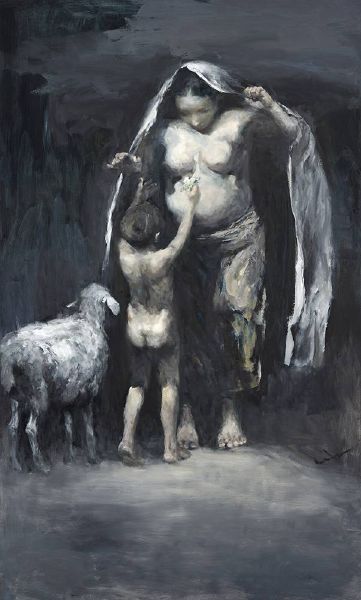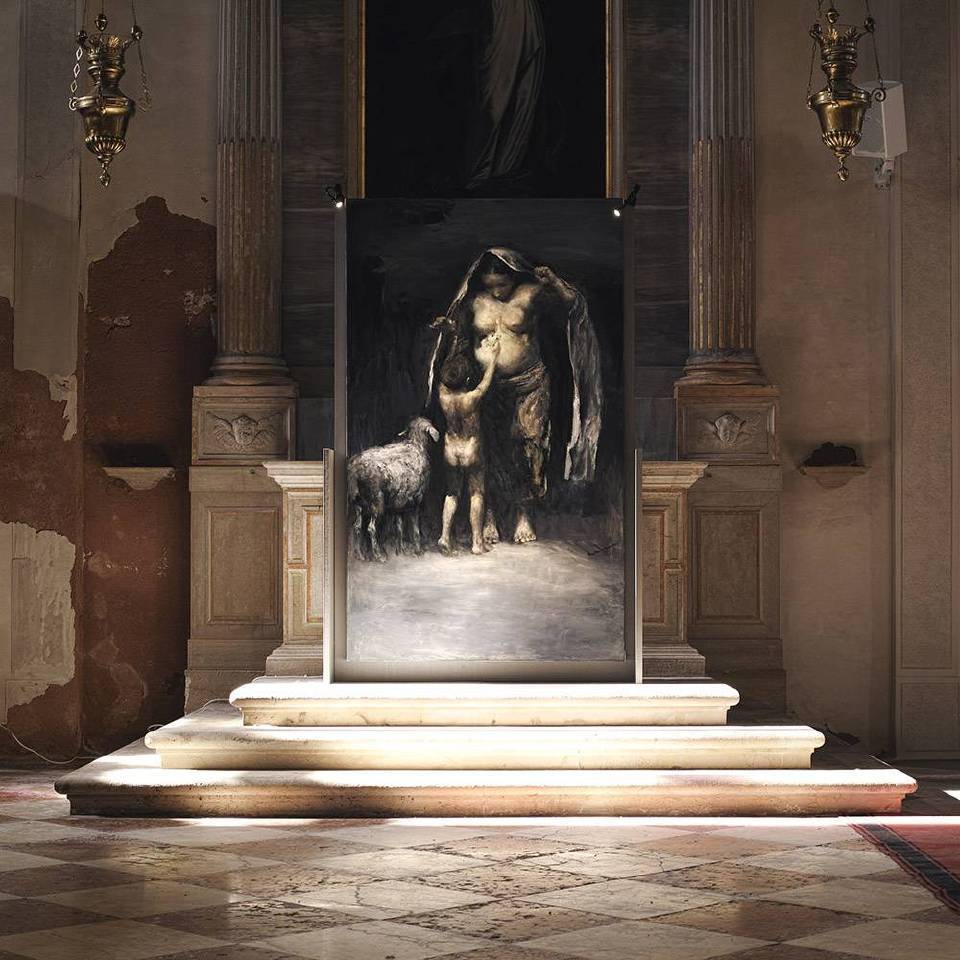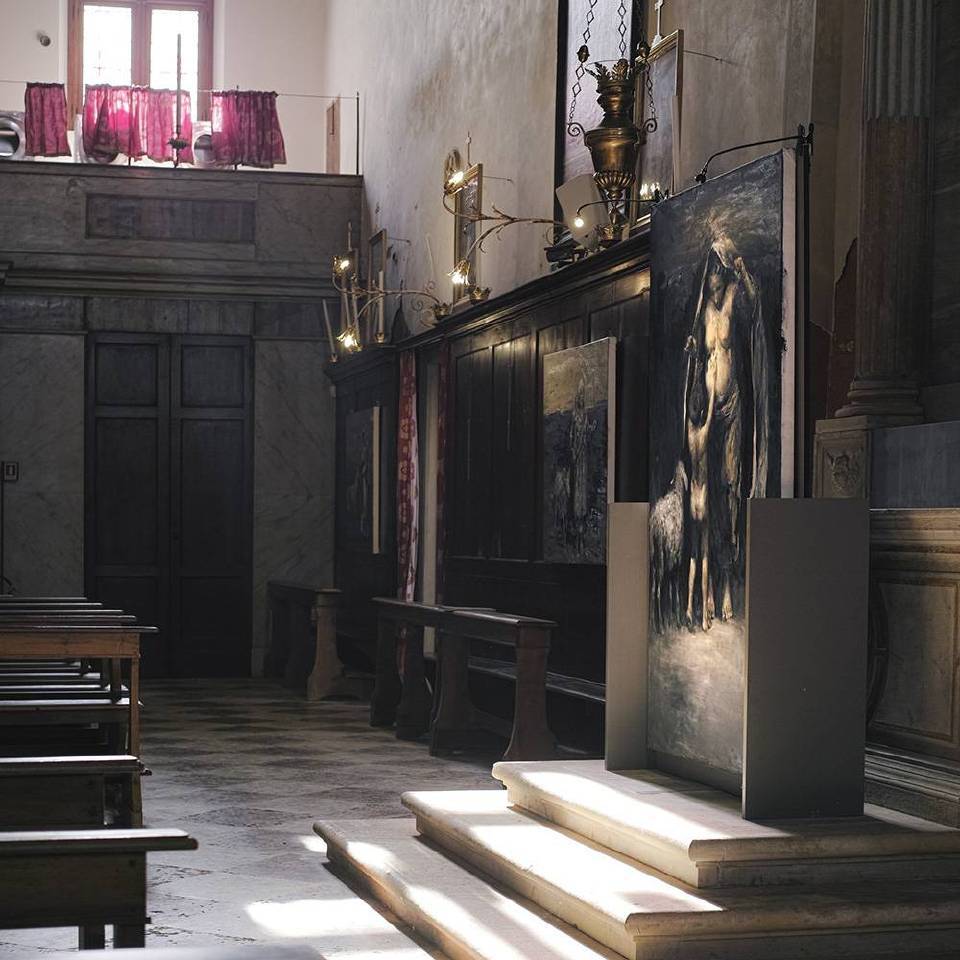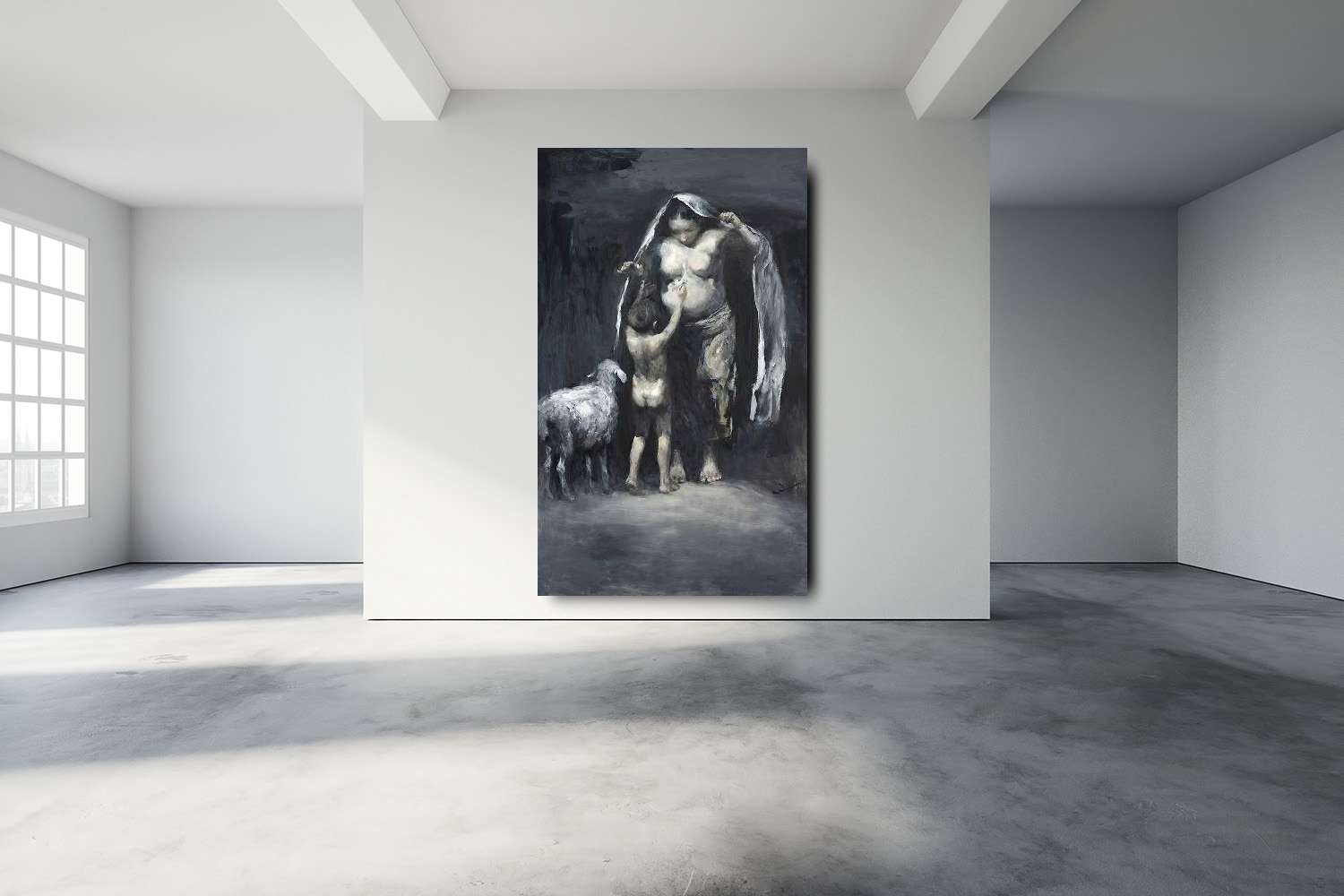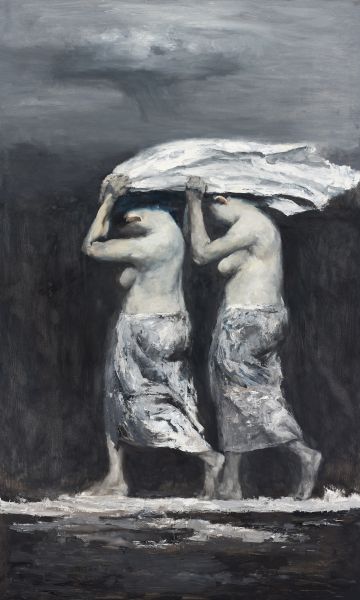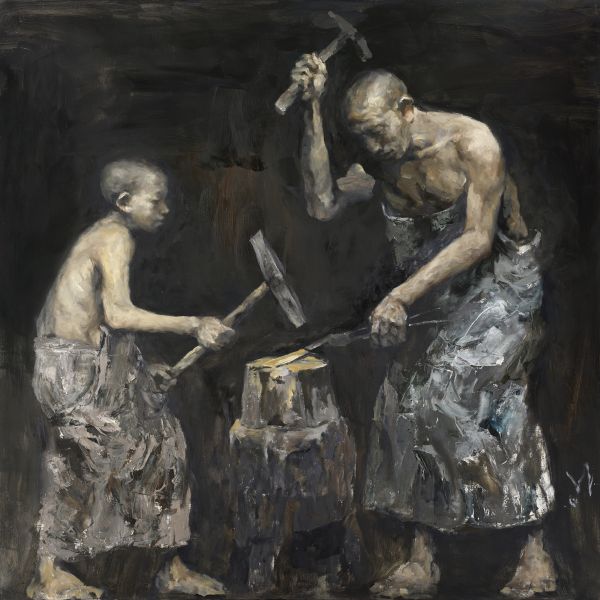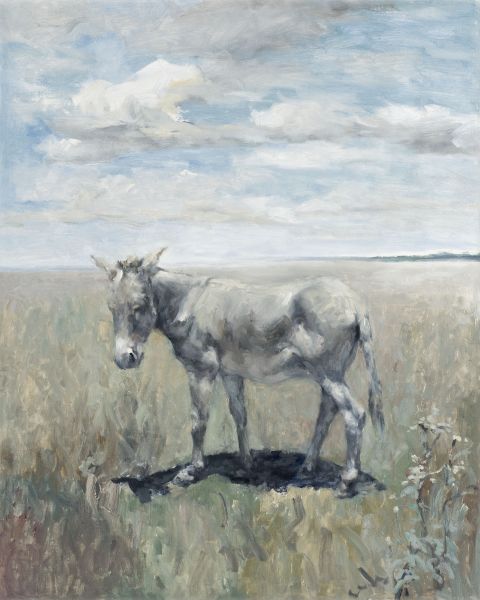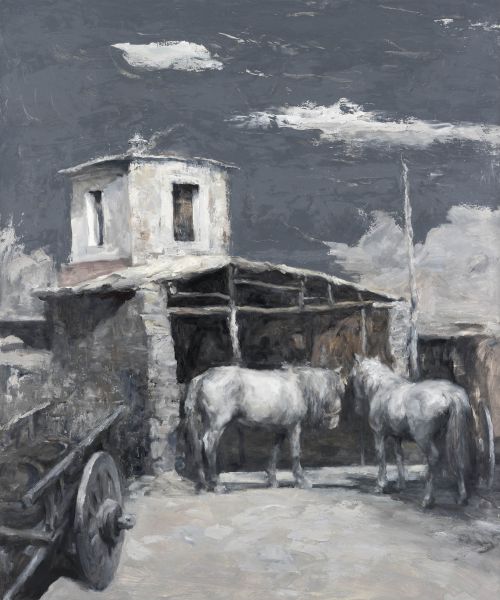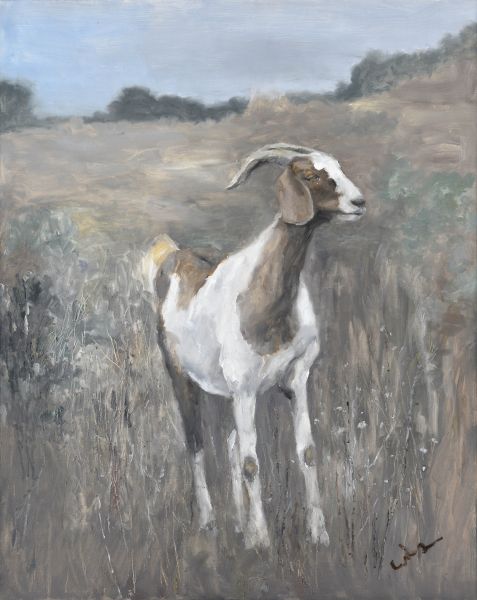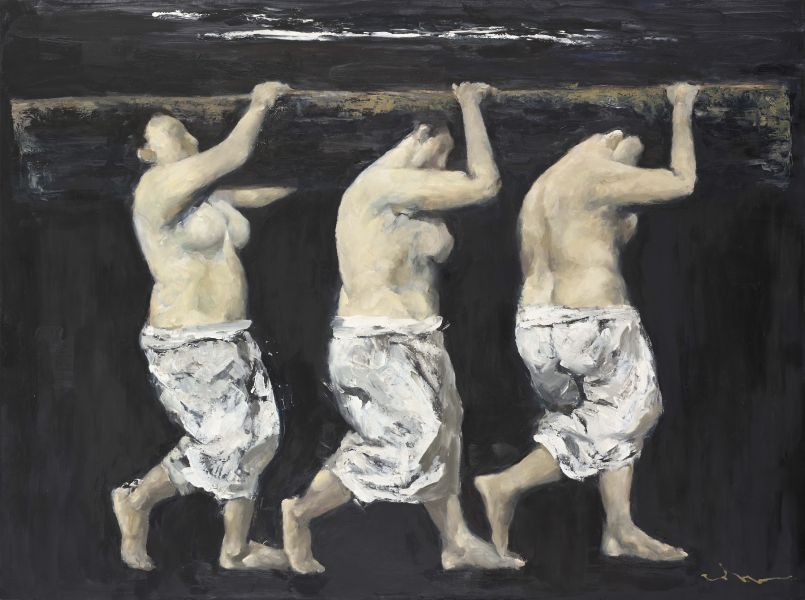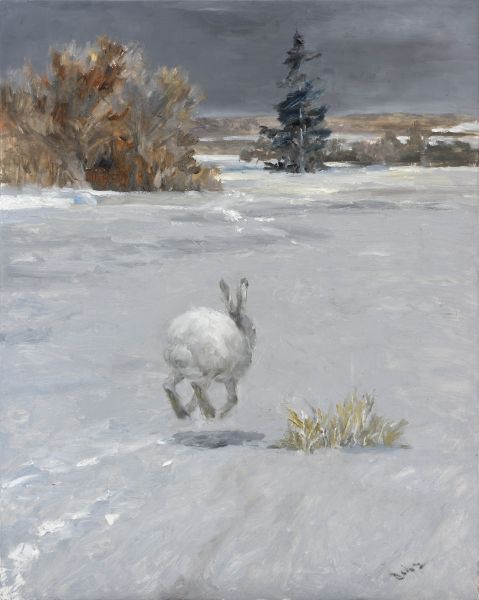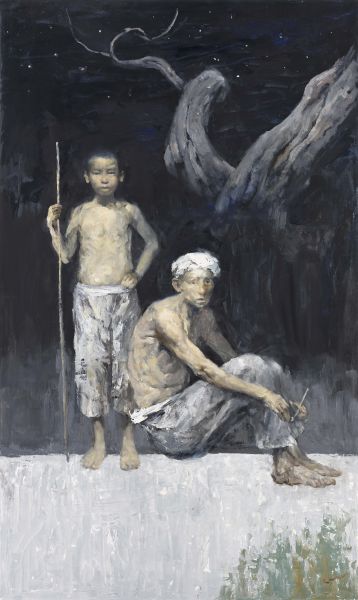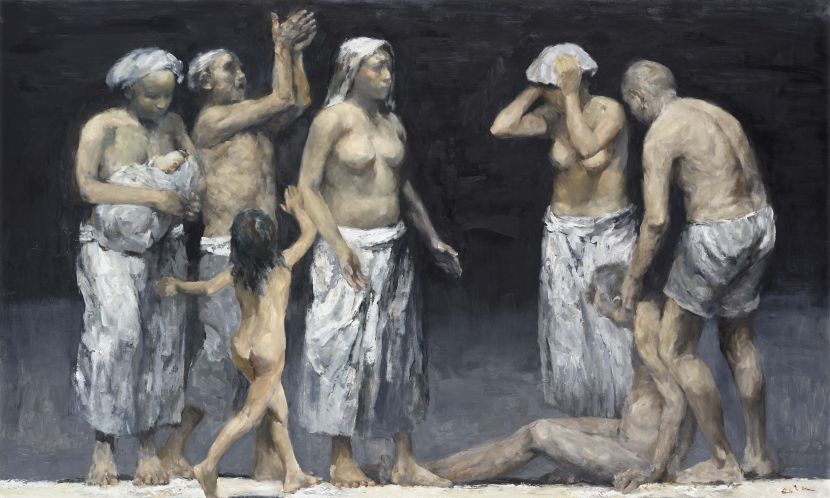Offered By

涵藝術經紀有限公司
台灣,台南市
-
生命禮讚
在《生命禮讚》中,我們看到一位懷有身孕的母親。即將成為哥哥的小男孩送給母親一件禮物:一朵野花。這不是一個多麼宏偉的姿勢,但媽媽被孩子的溫柔和單純的愛深深感動。在這幅畫中,我們看到了兩件對農民來說非常珍貴的東西:綿羊和斗篷。羊是山民們最珍貴的財富,但它也是孩子的親密好友。而斗篷,斗篷對這些人來說有多重要!這是一個看起來不重要但卻不可或缺的東西。它是被子、雨衣,可以避寒和遮雨,天天不離身,它給人們帶來慰藉。岑龍透過婦女緊緊被斗篷包住的姿態以及愛撫的手勢,巧妙的將斗篷帶來的溫暖注入畫面中。
岑龍在這幅畫的光線描繪技法很傑出。我們可以看到從上方溫柔的包覆著母親、孩子和羊的光芒。光線從地面反射,閃爍的反光散發著聖潔的氛圍,為這幅畫注入了神聖的氣息。我們從畫面那位母親的儀態,可以感覺她似乎是注視著孩子的聖母。母親張開着斗蓬,似乎即將包裹孩子,她溫柔的為我們展示了她所深深感受到的愛,感激和敬意⋯⋯
此外,從《生命禮讚》一畫中,可以看出岑龍作品駕馭色彩的特色。在他近期的作品中,灰色,黑色和白色色調占主導地位,和畫面變化多端的肌理交織為一首具深度的交響樂。他的主色調是各種具有冷暖傾向的灰色,形成對比,並且加入了更十方大膽的黑色和白色調,使得作品色彩跳躍生動而充滿活力。這些顏色將觀眾的視覺重點集中在人物角色身上,從而創造出具有動感並且看起來輕鬆隨意的效果。
最後,岑龍透過使用不同的筆法將現實的形象描繪到作品之中,使我們可以欣賞到他考究的筆觸和線條。他經常使用硬毛筆刷和油畫刀來製造紋理,為純粹的想像表現添加複雜的變化,使作品更為耐看。例如,在這幅畫中,母親的斗篷紋理,褲子和羔羊的絨毛處理都說明了岑龍在上述技法裡探究的效果,使繪畫得以在二維和三維也就是平面和立體的世界中有機的轉換。
在策展的思維部分,這次在馬爾他教堂的展覽,其實是希望在這一所中世紀就已經建成的教堂神聖莊嚴的氛圍中,讓觀眾更容易領會岑龍繪畫中的思想和精神,並得以重新審視信仰的意義。信仰是什麼呢?教堂內有一幅聖母的宗教畫「受胎告知」,我刻意將岑龍的巜生命禮讚》放置在下方,是希望讓這兩幅作品彼此呼應。我們在看上方的聖母畫作時,感受到宗教教化人心的力量,也得以理解聖經故事的片段。而岑龍的《生命禮讚》,則是讓觀眾體會到平凡生活中最可貴的母愛與親情,感受到樸實良善的人性所散發出的光輝。岑龍希望透過他的繪畫感染受眾,使其邁向真善美的本質。我認為,信仰可以是宗教的,也可以是人們心中對良善與愛的堅定信念。兩者同樣都會使我們驅向更純良的人性。而這種信仰及理念無論在過去、現在和將來,對於世界的和諧與安寧都起到關鍵性的作用。
Ode to Life
In the Ode to Life, a mother is pregnant with new life. A young brother-to-be gives his mother a present, a dainty flower he picked. Not a grand gesture—but she is touched by the tenderness and simple love it represents. In the painting, we see two things that are dear to peasants: the sheep and the cloak. The sheep is valuable livestock, but it is also a dear friend for the child. And the cloak, how important the cloak is to these people! It is an object at once simple and indispensable. It shelters from the cold and rain; it nestles them whenever they desire its warmth. Cen Long subtly infuses this scene with this warmth through the way the woman cradles herself within the cloak and the delicate gesture of her hands.
This painting stands out through Cen Long’s presentation of light. One sees a gentle halo enveloping the mother, the child, and the sheep from above. The light bounces off the ground, creating a shimmering reflection from below that exudes holiness and infuses the painting with divine warmth. Combined with the gesture of the mother, this painting seems to represent holy mother facing her children. And in the embrace of her cloak, how gently she appreciates the love, gratitude, and deference they show her!
Additionally, the Ode to Life is a great example of Cen Long’s unique use of color. In his recent works, gray, black, and white tones dominate, blended into a symphony of depth beneath the surface. His point of departure is the gray scheme, forming a foundation for the simpler and bolder black and white. These colors centralize the painting on the characters and create depth in the painting that is dynamic but nonetheless effortlessly focused.
Finally, Cen Long manages to bring the geometry of reality into the painting by alterations to his brushwork. He often uses hard bristle brushes and painting knifes to create surface textures, adding dimensional variation to the purely imagistic representations. For example—in this painting, the texture of the cloak, the pants of the mother, and the downy hair of the lamb all contribute to the geometry of the painting, allowing the painting to exist within a three-dimensional reality of depth and surface textures.
We have chosen to exhibit Cen Long’s art in the Church of Malta because in many ways it channels the solemn, holy, and divine atmosphere of the medieval church. We hope to lead audiences to contemplate the meaning of faith—what is faith? Consider the painting of the Virgin Mary at the moment of the Immaculate Conception. I placed Cen Long’s “Ode to Life” beside it to emphasize the resonance between the scenes. In the Mary we feel the power of religion to bring spiritual change, to induce metanoia, through the depiction of a biblical scene. “Ode to Life,” by contrast, represents the religious aspect of motherly love in a common man’s context, allowing audiences a path of relation to the transcendent event; the holy illumination that pervades the scene is tied as much to the love of Humanity as to the divine power of God. Cen Long hopes that his artwork will help the viewer feel closer to the ideals of truth, beauty, and kindness present in us all. I believe that religion is faith, and faith is an unshakable belief in kindness and love. Both allow people to return to a purer form of humanity. And this faith is an eternally critical cornerstone to the peace and stability of the world.
